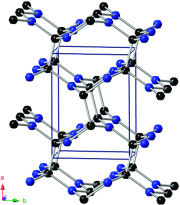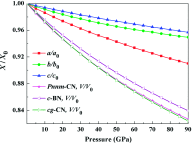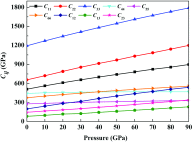First-principles investigation on elastic and thermodynamic properties of Pnnm-CN under high pressure
- PMID: 28090376
- PMCID: PMC5193123
- DOI: 10.1063/1.4972775
First-principles investigation on elastic and thermodynamic properties of Pnnm-CN under high pressure
Abstract
The elastic anisotropy and thermodynamic properties of the recently synthesized Pnnm-CN have been investigated using first-principles calculations under high temperature and high pressure. The calculated equilibrium crystal parameters and normalized volume dependence of the resulting pressure agree with available experimental and theoretical results. Within the considered pressure range of 0-90 GPa, the dependences of the bulk modulus, Young's modulus, and shear modulus on the crystal orientation for Pnnm-CN have been systematically studied. The results show that the Pnnm-CN exhibits a well-pronounced elastic anisotropy. The incompressibility is largest along the c-axis. For tension or compression loading, the Pnnm-CN is stiffest along [001] and the most obedient along [100] direction. On the basis of the quasi-harmonic Debye model, we have explored the Debye temperature, heat capacity, thermal expansion coefficient, and Grüneisen parameters within the pressure range of 0-90 GPa and temperature range of 0-1600K.
Figures








References
LinkOut - more resources
Full Text Sources
Other Literature Sources
